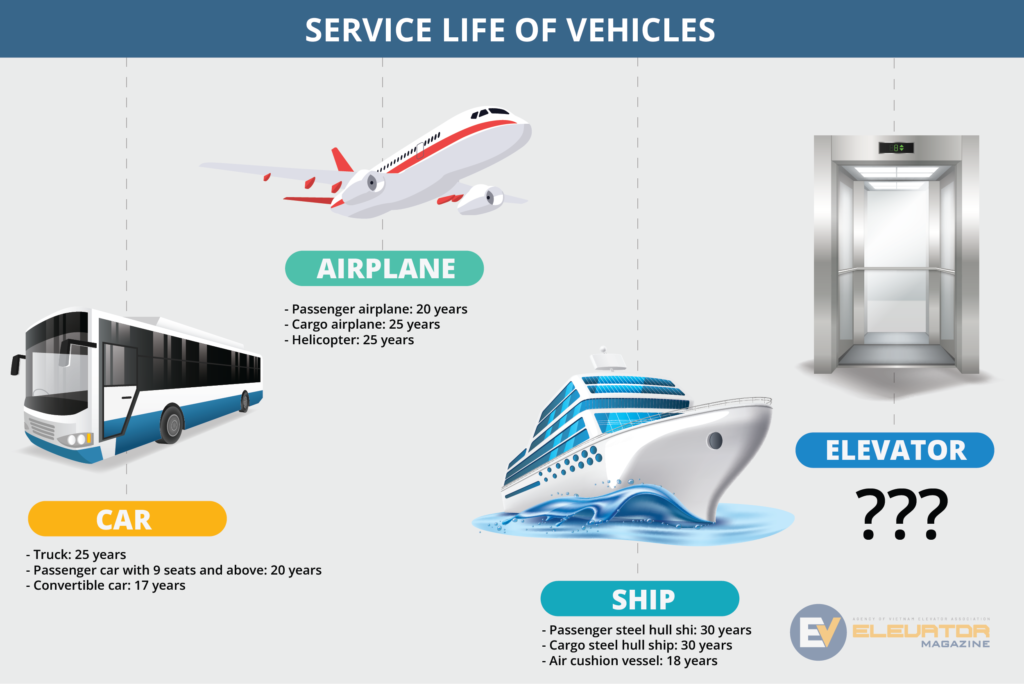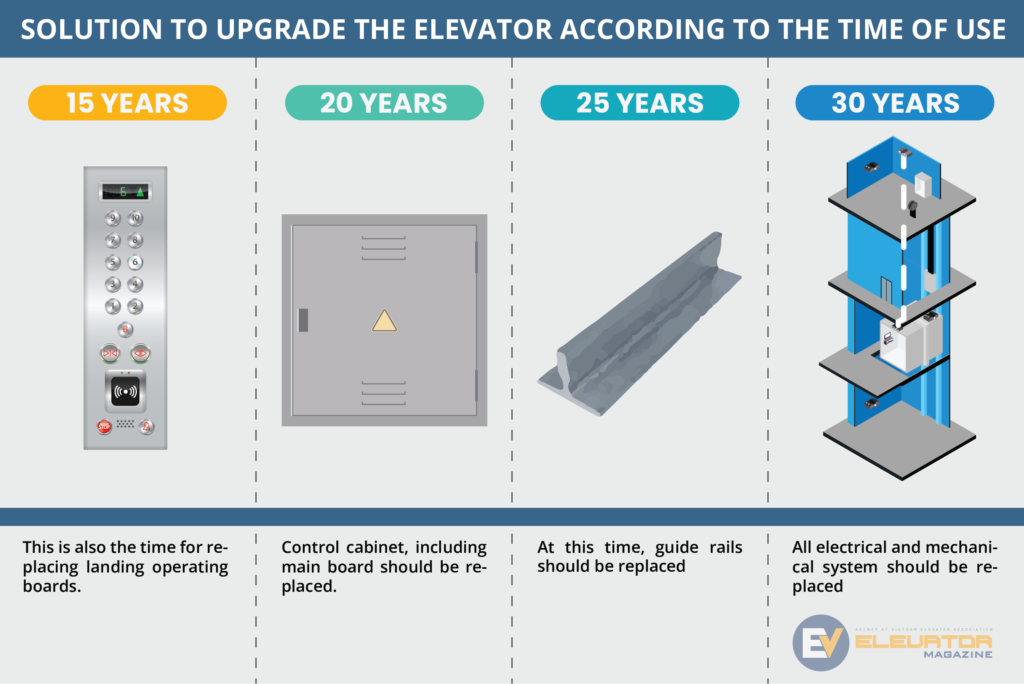All types of transport vehicles that are heavily related to human safety must strictly comply with regulations on shelf life. Meanwhile, elevators also have many similarities, but currently there is no regulation on “retirement age”. Should we ask these questions?
How long does an elevator’s “lifespan”?
That’s not just a question but an important issue for those in charge of management, policy formulation and elevator users to pay attention to.
We all know that means of transport such as airplanes, cars, ships and many other vehicles related to human safety are very clearly defined in terms of their shelf life. This is the maximum time that the device is allowed to operate and use. After this time, they will be replaced. The main purpose of the term is to ensure the equipment operates safely and optimally for people.
Back to the question: How long does the elevator “lifespan”? The answer depends on many factors. These are the function, frequency of use, quality of installation, maintenance, operating environment, operation method, use of elevator…
In addition, the origin and origin of components, equipment and synchronization factors will determine the life of the elevator.
Elevator is basically a combination of equipment composed of mechanical and electrical – electronic. During its lifetime, the mechanical and electrical components in the elevator will perform hundreds of thousands, even millions of operating cycles. The inevitable rule is that at some point, components will be aging and “out of date”.

Airplanes, ships, cars all have an expiration date. What about the elevator?
Research by European Elevator Association (ELA), the average life of elevators is calculated to be about 20-25 years. A general rule that applies to elevators in Europe is to refurbish lifts that are 20 years old or older. Because, based on the surveys and careful calculations of experts, during the latter part of this timeline, the elevator system will have a decrease in performance. At this point in the elevator’s life, ignoring refurbishment will result in the elevator becoming less efficient and more expensive to maintain and operate. Especially the safety factor for users will no longer be guaranteed.
Elevator upgrade solution
If an elevator has reached a long time, what will the owner do? There will be two cases.
Firstly, the elevator has been seriously degraded, so a new elevator should be installed.
Second, the elevator is still upgradeable. In this case, it is necessary to carefully calculate how much the upgrade cost is compared to the new installation cost. If the cost of upgrading is about 50% or more of the cost of new installation, it is recommended to make a new investment to achieve optimal.
Regarding the “age” at which the elevator needs to be “reconstructed” at different levels or replaced, ELA experts have given specific timelines.

Some reference solutions from European elevator enterprises
Should specify the time limit to use the elevator!
That’s what Mr. Pham Hoang Minh – Deputy Head of Legal – Inspection Department, Department of Labor Safety, Ministry of Labor, Invalids and Social Affairs. According to Mr. Minh, the failure to specify a shelf life for the elevator is an underestimation of potential risks.

Mr. Pham Hoang Minh: “The lifespan of equipment such as elevators will overcome the probability of “error” of the inspection stage, increasing the safety for operation and use”
In fact, there are two most basic solutions to control the operation of devices. One is to set a date, and the other is to use technical barriers, which here is the test.
Therefore, while waiting for the state management agencies to study and propose new regulations on the shelf life of elevators, the implementation of inspection regulations is an effective solution to ensure safety. .
According to Mr. Dang Anh Trung, Deputy Director of the Safety Technical Inspection Center of Region I, specifying the inspection milestones in the direction of gradually reducing the re-inspection time for elevators that have been used for many years is also a form of supervision. safety and effectiveness. However, it is necessary to have measures to closely monitor the implementation of the inspection and the quality of the inspection. Mr. Trung stated the reality, in resettlement housing areas, social housing, households, the inspection of elevators is very difficult to control. Even applying sanctions is difficult. Therefore, the regulation on the shelf life is necessary…
“To have such an influential regulation requires an extensive research process and the participation of many regulatory agencies and specialized agencies. In which, we are looking forward to receiving comments from the Vietnam Elevator Association”, Mr. Pham Hoang Minh shared./.



